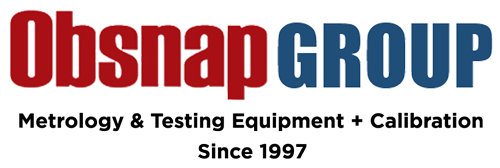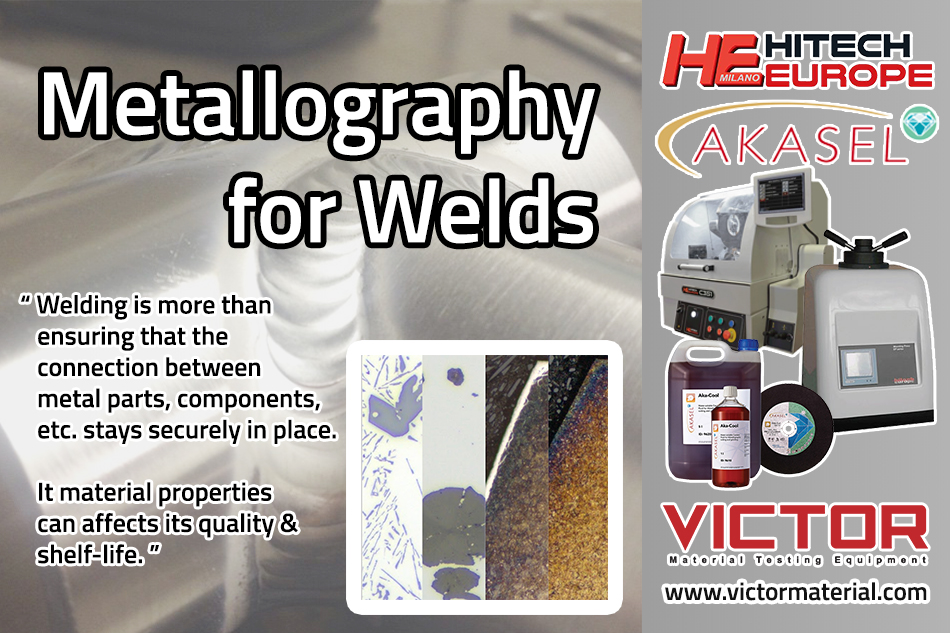View full & original post here.
Metallographic Welding Preparation
Around the 19th century, welding was introduced by joining sections of metal by forge welding (i.e. heating & hammering it). Today welding process like fabrication (for joining materials regardless of compositions, parts, shapes, and sizes) are commonly used.
Aircraft & Aerospace, Shipbuilding & Marine, Land transportation / Automotive, Oil & Petrochemicals, Domestic & Metal Furniture are some of the well-known industries that use welding.
Since welds are usually made by different materials, it is important to choose the right metallographic preparation method to analyse its quality.
For Refinement, Research & Development and Analysis, Metallography are applied to access the different aspects in a weld e.g. depth of penetration, the extent of Heat Affected Zone (HAZ), and other defects i.e. pores and cracks on representative workpieces.
Proper preparation methods are needed to study the microstructure and properties of the welded region.
Weld Microsections Examination Process :

Cutting / Sectioning :
The first process of preparing the specimen for metallographic or microstructural analysis. After choosing the desired area of interest, sectioning and cutting will be applied.
To avoid deformation from cutting while lowering the risk of thermal damage on the cut surface:

Mounting :
Mounting creates a mold around the specimens to provide protection and suitable & consistent sizes to be later used for the next preparation and examination steps.
Usually, macro sections for testing are unmounted due to time constraints, and the finish is usually adequate.
If semi-automatic preparation, then there are a number of specimen holders which will accommodate those sections from the welded joints. If mounting required there is an option of compression mounting.
It is not uncommon, weld examination has large cross-sections.

Electrolytic Polishing / Etching :
After cutting and grinding, the specimens are later electrolytically polished and etched to provide a section suitable for macro examination. (To corrode or eat away the surface of the top layer of the specimen; thus revealing the microstructures of the material for microscopic examination)
This provides:
- 1. Speedy and easy use of operation
- 2. Minimises user contact with acidic etchants
- 3. Capable of handling stainless steel types and other metal ls that are difficult to etch just chemically.
MECHANICAL PREPARATION TYPE:
Macro sections
Depending on the hardness, parent material, heat-affected zone, and metal welded of the specimen. A silicon carbide paper can make a specimen more suitable for macro etching and for weld macro examination later…
The cutting life of the silicon carbide paper can last between 1.0-1.5 mins and this exacerbated (intensifies) with increased section size.
An alternative for grinding/fining for manual preparation, the Akasel Aka Piatto can offer:
Micro sections
The weld’s material hardness can vary from one specimen to another. This is caused by phase changes during welding, or because the joint has different metals incorporated in it. Sometimes a weld metal can contain age hardening (or particle hardening) or unexpected welding defect.
The preparation is important to ensure minimal polish relief between microstructural features and that all microstructural elements are retained for examination.
Semi-automatic or automatic preparation equipment for the wide range of welded materials; can provide consistency and reproducibility of the polish which can facilitate accurate microstructural analysis.
For Metallographic Equipment & Consumables : 
- Metallographic Sample Preparation (HiTech Europe)
- Metallographic Consumables (Akasel)
For Consultation on Metallographic Equipment :
Samson Chong, Product Specialist 012-3312576 (WhatsApp)

Since 2010, Victor Equipments Resources Sdn Bhd (1021443-H) have served over 500+ companies including:
• Automotive Industries Sdn Bhd (AISB)
• Akzo Nobel Paints (Malaysia) Sdn. Bhd.
• Engtex Ductile Iron Pipe Industry Sdn. Bhd.
• HELP University Malaysia
• KYB-UMW Malaysia Sdn. Bhd.
• TÜV SÜD (Malaysia) Sdn Bhd
And More !

